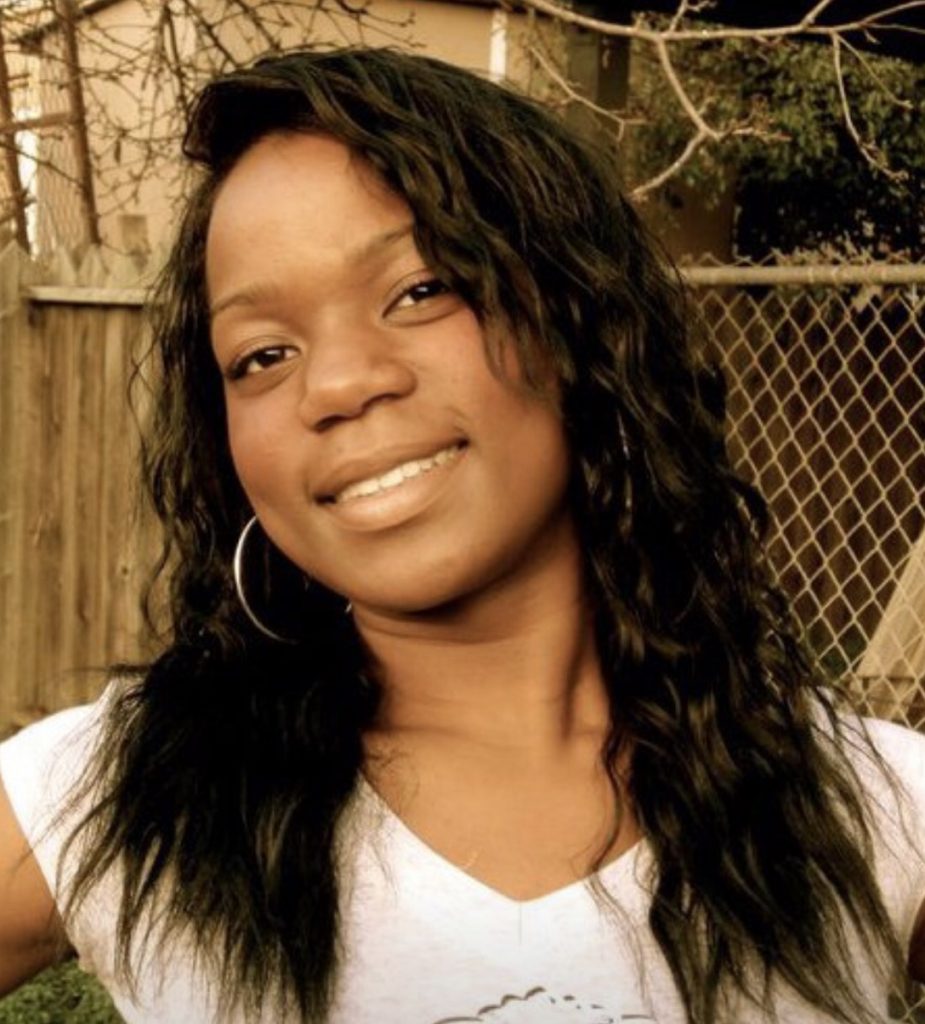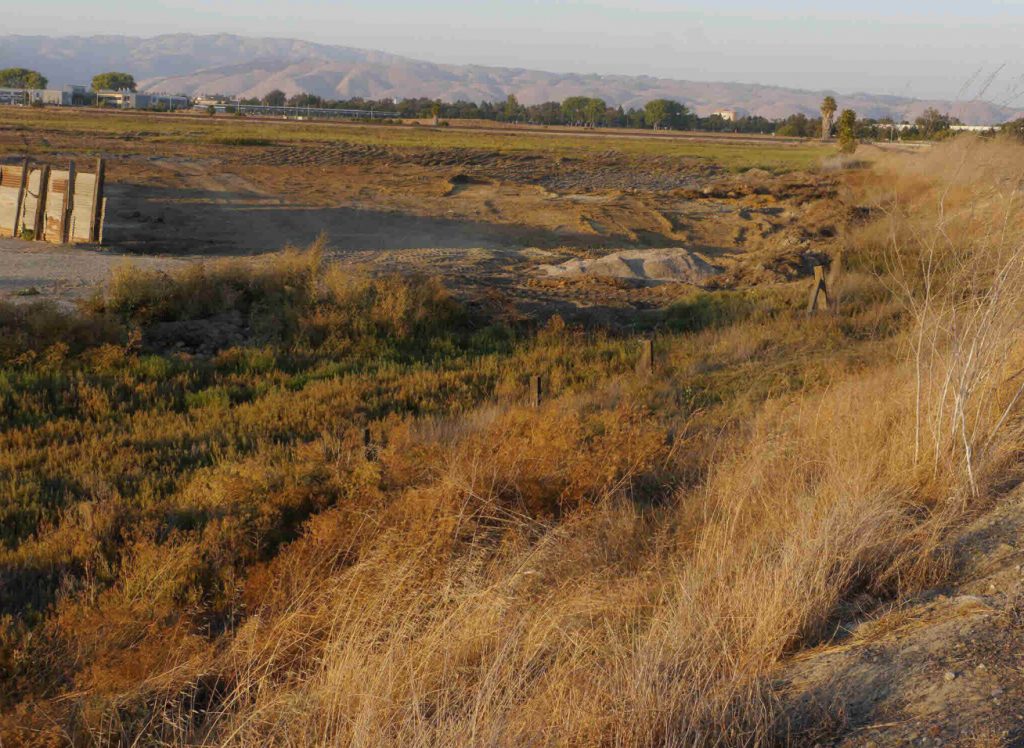Thelton Henderson had once imagined that the Oakland Police Department would complete its 14-year-reform effort by the time he retired from the federal bench. But those hopes were dashed after last year’s OPD sex abuse scandal involving an exploited teenage girl. When Judge Henderson steps down on Aug. 11 after 37 years, he’ll have to turn the case over to Judge William Orrick III, the son of one of Henderson’s early mentors.
“I think the situation is akin to a Shakespearean tragedy,” Henderson said during a recent interview in his San Francisco chambers. “I was beginning to say to myself and my staff and to insiders that I could finally see the light at the end of the tunnel.”
On July 10, during his last hearing overseeing the OPD case, Henderson called top city officials to court, including Mayor Libby Schaaf and Police Chief Anne Kirkpatrick. A scathing report by investigators appointed by Henderson had accused the department of conducting a “seriously deficient” investigation into misconduct by a dozen officers or more.
Henderson had first learned of the scandal in March 2016 through court-appointed monitor Robert Warshaw. A suicide note left by Oakland police Officer Brendan O’Brien in September 2015 had implicated cops in having sex with a victim of sex trafficking who went by the name Celeste Guap. Eventually, OPD disciplined 12 officers, firing four of them. Prosecutors filed criminal charges against three officers and a retired sergeant.
The court investigators appointed by Henderson found that without intervention, likely no officers would have been held accountable. The department had botched nearly every aspect of the investigation, including hiding the case from the district attorney’s office and allowing the victim to destroy evidence during a police interview.
The wide-ranging scandal represented a serious setback for OPD, a department that in recent years had been examined as a national model for reform. Under Henderson’s watch, the department has reduced racial profiling and the use of force. In 2014 and 2016, for the first time in decades, there were no shootings by Oakland police officers.
Henderson’s influence can be felt throughout California’s justice system. Not only was he one of the first judges to take on comprehensive police reform, he placed the California prison system under court control after finding that the abysmal state of its medical care system was unconstitutional.
Gov. Jerry Brown challenged one particularly ambitious order—to reduce the prison population by 46,000—all the way to the U.S. Supreme Court, arguing that a federal judge couldn’t tell California how to run its prisons. Henderson likened Brown’s argument to that of Alabama Gov. George Wallace who contended 50 years ago that a judge couldn’t tell Alabama how to run its schools.
“Well, the hell you can’t, and Brown vs. Board of Education put it into law,” said the 83-year-old Henderson. “We can tell them how to run their prisons when the prisons are violating Constitutional standards, in this case, the Eighth Amendment. It doesn’t help to call me an activist judge; it doesn’t mean anything.”
The Supreme Court upheld the ruling in a 5-4 vote in 2011. Since then, California has successfully reduced its prison population to the court’s target and improved its medical care. California prisons remain under court oversight to ensure sustained compliance.
In the years ahead, prison reform will likely be Henderson’s most enduring legacy, but his influence can be felt in disability rights, veteran’s services, and even the “dolphin safe” labels on cans of tuna. Most recently, he presided over PG&E’s criminal trial for the 2010 pipeline explosion in San Bruno that killed eight people.
Once a liaison between Martin Luther King Jr. and Bobby Kennedy, Henderson has a career that spanned 11 presidents. He ran a legal aid office, had been a defense attorney and a dean at Stanford Law School, and famously was fired from the Justice Department for loaning his car to King. As a judge, he is known for his meticulous fact-finding and dogged persistence.
“He has led an exemplary life as far as working for greater civil rights, not only for African Americans but really for all people,” said Jim Chanin, one of the attorneys who brought the Oakland police case. “I think his accomplishments are so vast it’s very difficult to sum them all up in any one set of quotes. He will be missed terribly.”
Born in Shreveport, La., in 1933, Thelton Eugene Henderson moved with his family as a child to South Central Los Angeles, where he later attended high school. In 1951, he enrolled at UC Berkeley on a football scholarship. He was a particularly fast halfback until he injured his knee during his sophomore year. After a stint in the Army, he returned to Berkeley to go to law school.
He joined the U.S. Department of Justice under Attorney General Bobby Kennedy in 1962. Henderson said he landed the job “quite by accident,” but that description minimizes his diligent study as one of only two black graduates of the law school that year. At the time, Assistant Attorney General John Doar was accounting for minority employment in other government agencies, but then someone pointed out that Doar didn’t have any black attorneys working in the field. So he went to Berkeley to recruit, and the law school dean recommended Henderson.
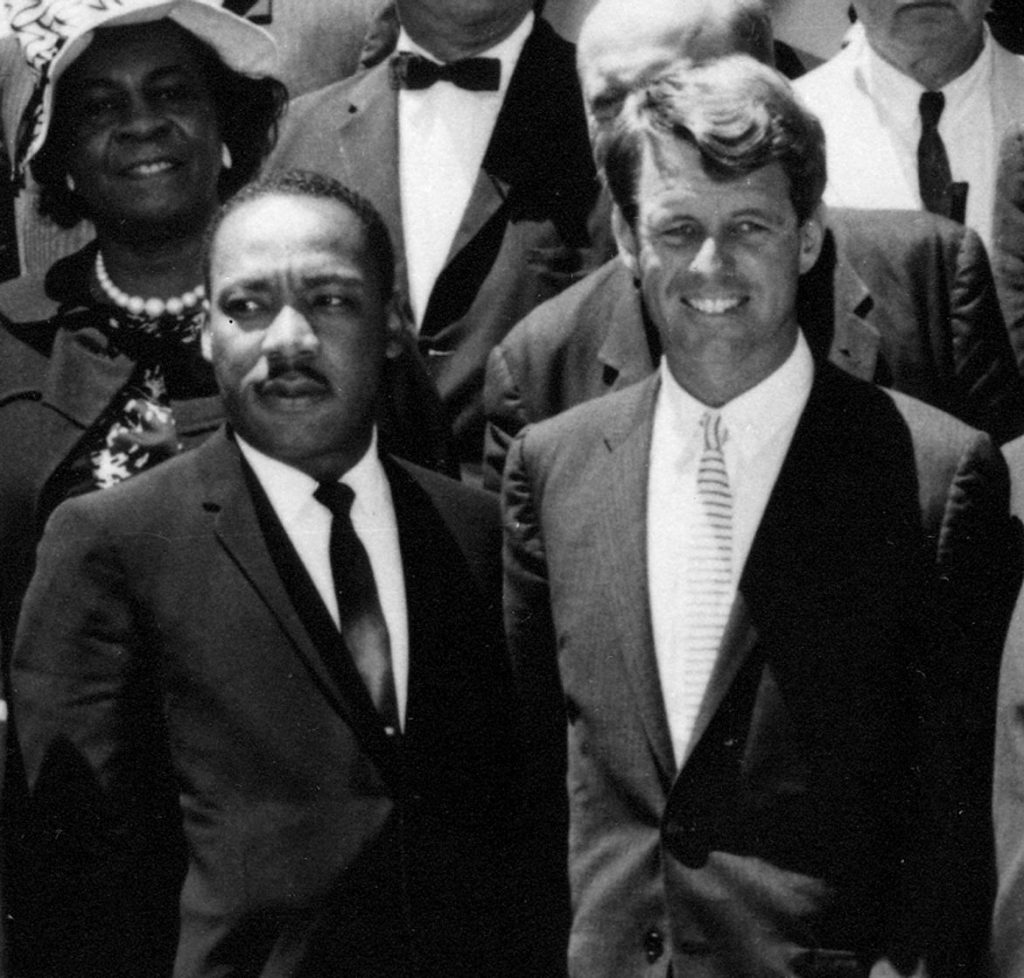
When Henderson joined the DOJ’s nascent civil rights division, it only had 37 attorneys and was focused on voting rights in the Deep South, specifically in Mississippi, Alabama, and Louisiana. Initially assigned to the Louisiana branch, Henderson soon found himself roving between the three states depending on whether something particularly important was brewing there.
Henderson said that although he encountered discrimination at times throughout his life, the racism in the South was shocking. “I really saw what racism was about down South and how the people were treated,” he said. “The cruelty and brutality really woke me up to what was really going on.”
In an interview with historian Leah McGarrigle, Henderson related one particularly harrowing incident in which he once stopped at a gas station phone booth to call Doar while with an intern driving through Forest, Miss., deep in Ku Klux Klan country. As Henderson’s conversation ran long, a hostile crowd started gathering. Henderson quickly got in his car and drove away—the wrong way so as not to cross the double-yellow line in the road, fearing that he and the intern would be arrested.
He recalled that when they turned around and came back, “that gas station was loaded with people … We think that they had put out the call and that we would have been lynched if we had another five minutes.”
Henderson first arrived in Birmingham as an observer in 1963 for an upcoming civil rights campaign. He anticipated there would be civil rights violations from the brutal policing of Commissioner Bull Connor. He was right: Connor turned dogs and fire hoses on marching students and children. The images broadcast worldwide helped galvanize support for civil rights legislation.
When he was jailed in Birmingham in April 1963, the Rev. Martin Luther King Jr. wrote, “Birmingham is probably the most thoroughly segregated city in the United States. Its ugly record of brutality is widely known. Negroes have experienced grossly unjust treatment in the courts. There have been more unsolved bombings of Negro homes and churches in Birmingham than in any other city in the nation.”
Henderson met King and other civil rights leaders in Birmingham as a result of segregation: The A.G. Gaston Motel was the only place in town they could stay. At first, King and his colleagues were skeptical of the young DOJ attorney. While they were happy to see a black man working in the Justice Department, they weren’t sure whether he was there to help or to infiltrate and undermine their efforts.
“We were standing outside [the motel] talking, and I said, ‘You know you really shouldn’t tell me anything that you don’t want Bobby Kennedy to know,’” Henderson recalled. “They said, ‘Ah, he’s straight with us.’ And after that we had no problem and got along well.”
Shortly after protests ended, the Ku Klux Klan descended on the city for a rally. On May 12, 1963, bombs went off at the home of King’s brother, the Rev. A. D. King, and at the A. G. Gaston Motel. Though the Klan was apparently targeting King, Henderson had been staying near the bomb blast site as well. Luckily, he had checked out earlier that day.

Henderson returned to Birmingham that September after the Klan bombed the 16th Street Baptist Church, killing four girls. He had been visiting friends in Washington, D.C., at the time of the church bombing, and when he returned home, he found a military jeep waiting for him outside his apartment. They rushed him to the FBI headquarters in Birmingham.
He was told to contact King immediately. By the time Henderson headed out, it was dark, and the FBI agents warned him that violence was breaking out along racial lines. As Henderson left the white area in downtown Birmingham, he was careful to keep his lights off for fear of someone recognizing he was black, hearing scattered gunshots as he drove across town.
But the relationship Henderson cultivated with the civil rights leaders eventually cost him his job. On Oct. 15, 1963, King was going to address an integration rally but was concerned about one of the tires on his car, so he asked Henderson if they could use his. Some of the rural areas King would be driving through could be particularly hostile to a black civil rights leader.
Fearing King could be killed if he got a flat tire, Henderson didn’t hesitate to lend him the car.
Agents for then Gov. Wallace were tailing King that night. They took his license number and noticed the car had been rented by a Justice Department attorney. Wallace seized on the opportunity, arguing that it showed the Kennedy Administration was secretly siding with the civil rights movement. Henderson was portrayed as a high-ranking government official and even a personal friend of the president.
“They were playing it for all it was worth and they argued that this is what [the Justice Department was] really doing down there—they’re not enforcing civil rights; they’re encouraging demonstrations,” Henderson said.
The DOJ quickly fired Henderson, but the hard lessons he learned in the Deep South would later serve him well in private practice and on the bench.
In a way, Henderson’s job as a U.S. District Court judge wasn’t so different from when he first started out in the Justice Department, looking for “patterns and practices” in voter rolls. In the early ’60s, he and other DOJ attorneys would notice that few black people were registered to vote and would investigate to find out why, uncovering practices like requiring would-be black voters to pass difficult written tests.
“We were honors graduates from law school … and we couldn’t answer a lot of those questions they were giving, so we knew that the white farmer who had a third-grade education wasn’t answering them and yet he was a registered voter,” Henderson recalled. “You had to look around and see what was really going on.”
Henderson kept an eye out for what’s going on under the surface throughout his career. After leaving the Justice Department, he worked as a defense attorney in Oakland. Then in 1966, he helped open a small legal aid office in the mostly black community of East Palo Alto.
He found the community there was skeptical of his staff of white law students from nearby Stanford University. In 1968, he found out that Stanford Law School was just graduating its first black student, a fact that raised questions in Henderson’s mind about why Stanford was so far behind Berkeley.
“I was young and rambunctious enough in those days to go over and ask for a meeting with the dean,” Henderson said. He was told that Stanford would accept any black student as long as his or her grades and test scores were high enough. But Henderson questioned whether the school’s legacy admissions—the sons and daughters of alumni—were held to that same criteria and asked to examine the admission records. Soon, he was working for the law school recruiting minority students.
“I learned that kind of analysis—the way things are done—from my experience with the Justice Department,” Henderson said. “See what they’re really doing, not what they say they’re doing.”
Henderson briefly went back into private practice in the late 1970s before applying for an opening in the U.S. District Court, Northern District of California. He was recommended for the bench by then Sen. Alan Cranston, D-Calif., and nominated in 1980 by President Jimmy Carter, who was looking to appoint more women and minorities to the judiciary.
As a judge, Henderson’s objectivity has been challenged at times because of his race. When he blocked enforcement of Proposition 209, a 1996 ballot measure that effectively outlawed affirmative action for governmental institutions in California, he relied on his typically detailed analysis of the facts but was still widely accused of bias.
He predicted that enrollment of black students at universities would be halved by eliminating affirmative action. In his ruling, Henderson found that Prop 209 conflicted with constitutional protections for women and minorities by prohibiting programs necessary to break down historic patterns of exclusion. But the 9th U.S. Circuit Court of Appeals overturned Henderson’s decision, finding that affirmative action programs were not constitutionally protected. Henderson’s decision drew calls for his impeachment and even death threats.
While there remains intense disagreement over the exact effects of Proposition 209, after affirmative action was eliminated in the University of California, there was an immediate decline in African-American enrollment. The admissions rate for black students at Berkeley plummeted from nearly 50 percent in 1997 to only about 20 percent in 1998. Black students remain underrepresented at Berkeley, comprising only 3.3 percent of undergraduate students in 2016.
In 1990, Henderson was assigned a case that alleged that conditions at Pelican Bay State Prison—a super-maximum security facility that had opened a year prior—were inhumane. Henderson personally toured Pelican Bay for two days before a 10-week trial in 1993 that featured testimony from 57 witnesses, including prisoners and correctional officers as well as experts in medicine, psychology, and prison management.
In his 1995 opinion on the case, Henderson wrote, “dry words on paper can not adequately capture the senseless suffering and sometimes wretched misery that defendants’ unconstitutional practices leave in their wake.”
He found there was a “conspicuous pattern of excessive force,” citing numerous examples: Guards had gassed, Tased, and beaten a man unconscious after he refused to return his food tray; they bathed a mentally ill inmate in scalding water; and they caged prisoners in phone-booth-sized outdoor cells in cold rainy weather or punished them further by hog-tying them.
While Henderson was reluctant at the time to make the federal courts an instrument of prison reform, he found the conditions intolerable and ordered reforms that would continue for the next 16 years.
A far larger case challenging the adequacy of medical care in the state’s entire prison system reached his courtroom in 2001. While the state conceded there were deficiencies in medical care, as the years went by, Henderson saw little progress.
When he placed the state’s prison system under court receivership in 2005, his 53-page order meticulously documented the deficiencies. He wrote that care was so poor it “often sinks below gross negligence to outright cruelty.”
One prisoner went two to three weeks with fever and chills and requested care, was eventually diagnosed with endocarditis (an inflammation of the heart lining), but didn’t receive appropriate medication and died. Another patient complaining of shortness of breath was swollen all over, had high blood pressure, and an elevated heart rate, but a medical provider sent him back to his housing unit saying he “just needed sleep” shortly before he collapsed and died. Between August 2003 and August 2004, court-appointed experts reviewed 193 prisoner deaths and found 32 of them were probably preventable.
In the course of his research, Henderson visited nearly all of the 33 prisons in the state, finding the inmates to be mostly minorities crowded into deplorable conditions. Incarceration in California exploded in the 1980s and ’90s during the height of tough-on-crime laws. When Henderson took the bench in 1980, there were only 30,000 prisoners. Twenty years later, the population had swelled to 185,000. “That’s an astonishing increase,” he said.
Eventually, he, along with federal Judges Stephen Reinhardt and Lawrence Karlton, formed a special three-judge court to examine the California prison issue, consolidating Henderson’s case with another case involving mental health care. They found that substantial overcrowding was responsible for the continued deficiencies. When their order to reduce the prison population to 137.5 percent of its design capacity was heard by the U.S. Supreme Court in 2011, California’s prison population was nearly double its capacity of just under 80,000 and had been for at least 11 years.
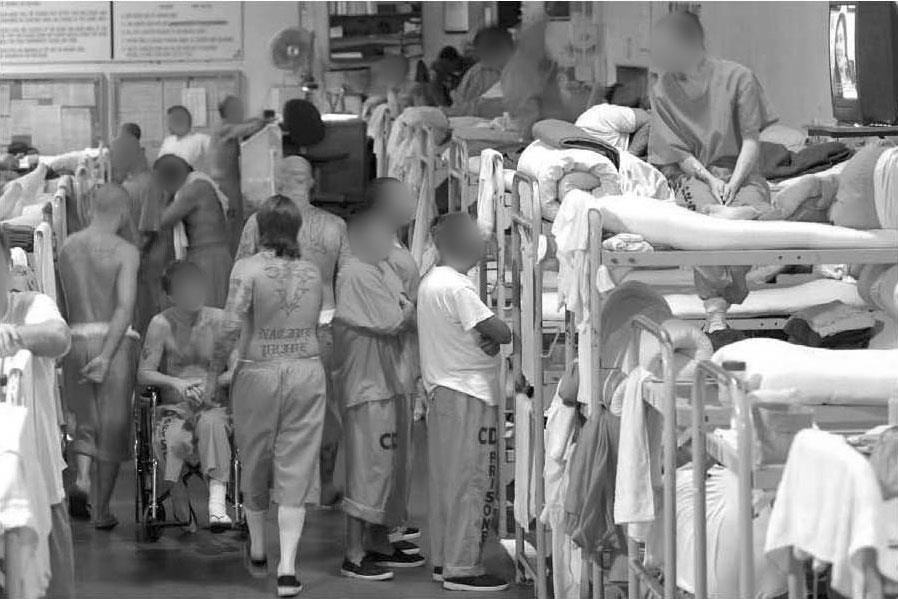
Donald Specter, executive director of the Prison Law Office, which originally brought the two cases, credited Henderson’s passion for research and fact-finding for why few of the judge’s decisions have been appealed over the years, including his order placing the entire prison system into receivership.
“These orders ran to hundreds of pages long sometimes, they were exhaustive, they were detailed, the explanations and the factual basis for the orders were extremely compelling, and I think that’s one of the reasons the state never appealed,” Specter said. “He’s an incredibly thoughtful, careful jurist, but at the same time, he has the ability to issue bold and sometimes unprecedented rulings when the factual circumstances present themselves.”
After a whistleblower exposed a group of Oakland police officers called the “Riders” who were routinely beating minority residents and planting drugs on them as a pretext for arrest, OPD fired four of the officers, and prosecutors filed criminal charges against them in 2000. A federal lawsuit brought by 119 West Oakland residents against the city and the police department landed on Henderson’s desk the next year.
The case led to Henderson approving a settlement in 2003 awarding the plaintiffs $10.5 million and requiring extensive reforms. The reforms were only supposed to take a few years, but they have dragged on. Henderson nearly put the department under receivership in 2012, when progress had not only stopped but the department had regressed in some areas.
In 2013, a few months after Henderson gave the court compliance director the power to fire the police chief, Chief Howard Jordan suddenly stepped down citing health issues. After some initial confusion over who would step in, Sean Whent was named interim chief.
But Whent was ousted last year as news of the sexual exploitation scandal became public. Court-appointed investigators found that he “sent an unmistakable signal that this case was not a priority,” reportedly at one point calling the investigation “bullshit.”
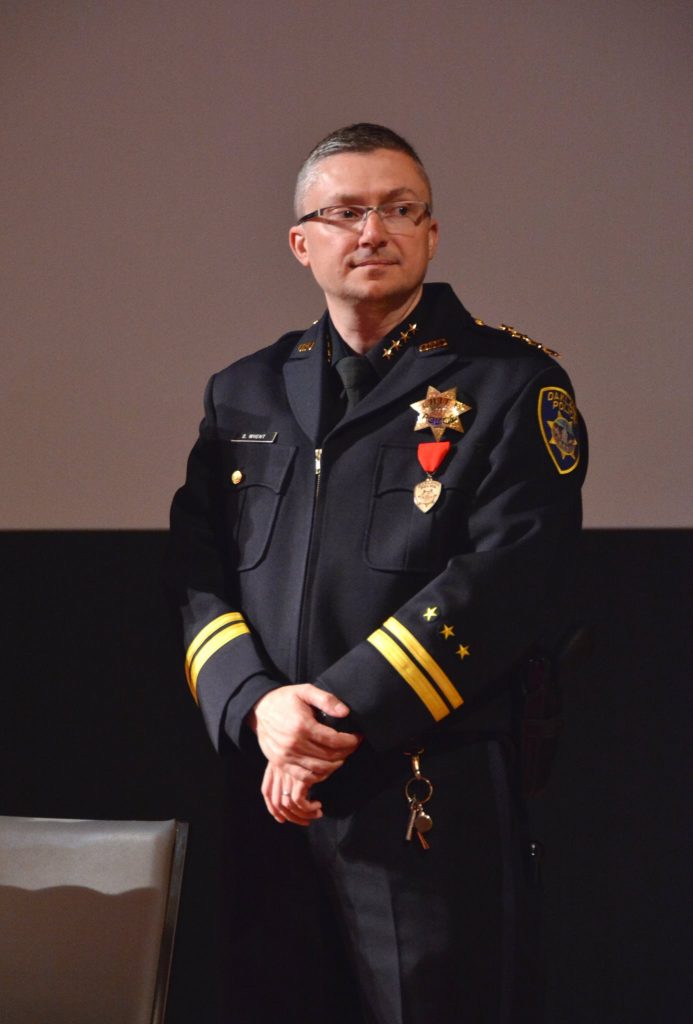
Henderson was a supporter of Whent’s, saying he was sorry to see him go. “I liked Sean Whent; he had that job because he was brave enough as the head of internal affairs to insist on accountability. They were making great progress and then the wheels fell off with the sex scandal. That set them way, way back,” he said.
Chanin, who originally brought the case along with Oakland attorney John Burris, said, “I really wish that we could’ve resolved this case during [Henderson’s] tenure. I certainly think that a lot of the progress we did make can be attributed to his guiding hand, his perseverance through many years, and his strong leadership in his judicial capacity.”
Henderson said that when reforming institutions like the Oakland Police Department or the prison system, enforcement is a constant challenge. “Institutions don’t like a federal judge to come in and tell them what to do. They resist it. And that’s why these things go slowly. They do it grudgingly,” he said. Lacking the ability to hold individual police officers in contempt, Henderson’s approach is changing the system slowly through new training.
“We now have a police force that the vast majority of the policemen now have only known the rules set up after the Riders case,” he said. “We’re trying to change the culture and sometimes that’s the only way you can do it is slow progress.”
As Henderson enters retirement, civil rights are in a precarious position. Donald Trump ran on a platform stoking fear about immigrants and criminals, making wildly false claims about the state of public safety in the nation’s cities. While the fight to maintain civil rights under this president has already begun, Henderson sees it as a strictly temporary one.
“I won’t let myself believe that Trump is going to be in office beyond four years, and the way it’s going, it well may not even be four years,” Henderson said. “And it will be a fight to hold onto what we have during that time and then return to what I think is normalcy. I think by no means is this a normal president.”
Since Trump’s election, cases have started rolling into the courts challenging some of Trump’s more extreme policies, with civil rights advocates already winning some important victories. But other judges will have to hear those cases. Henderson will be taking long car trips to see the views along the California coast with his wife and his little white dog, Missy.
